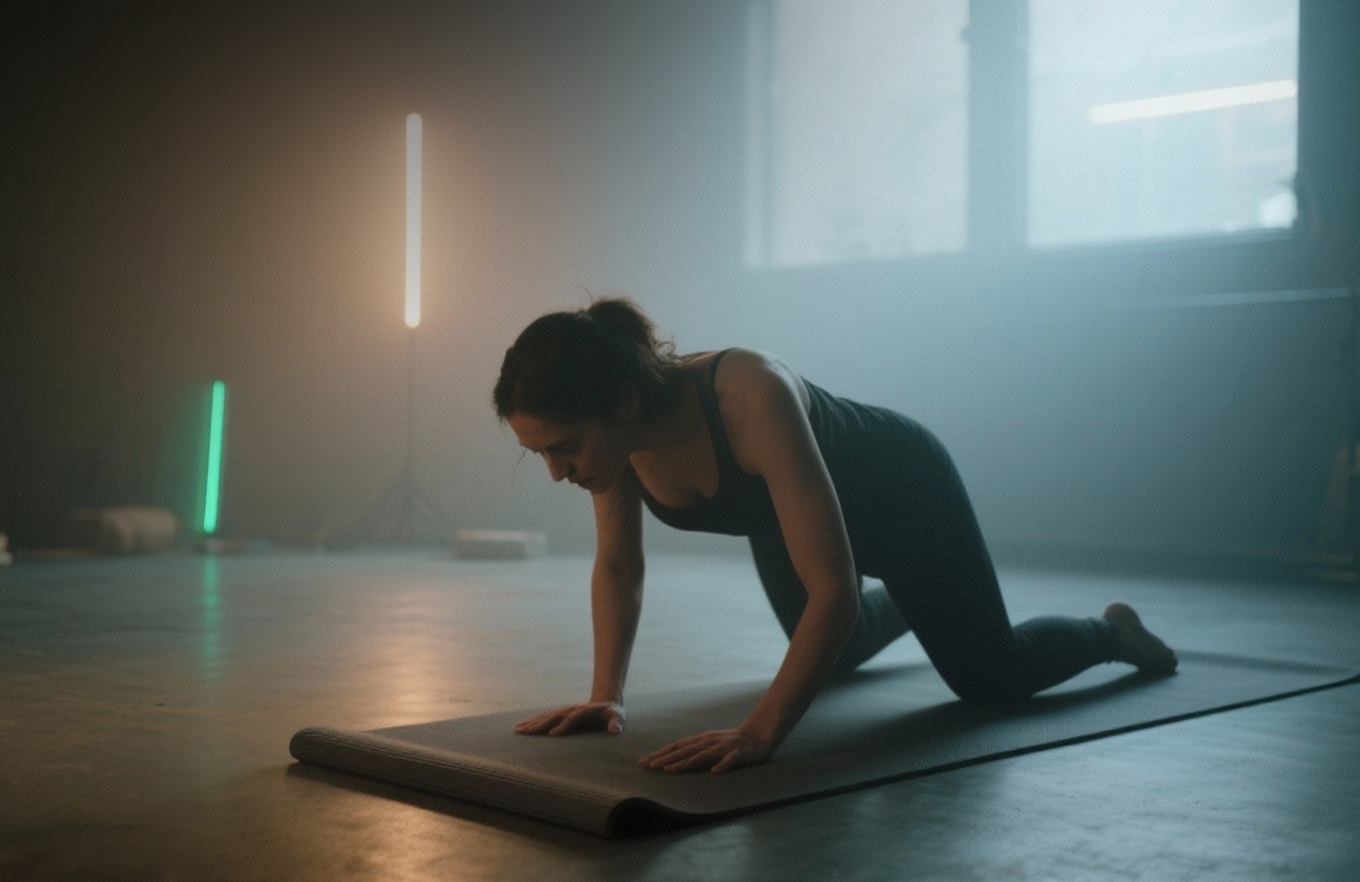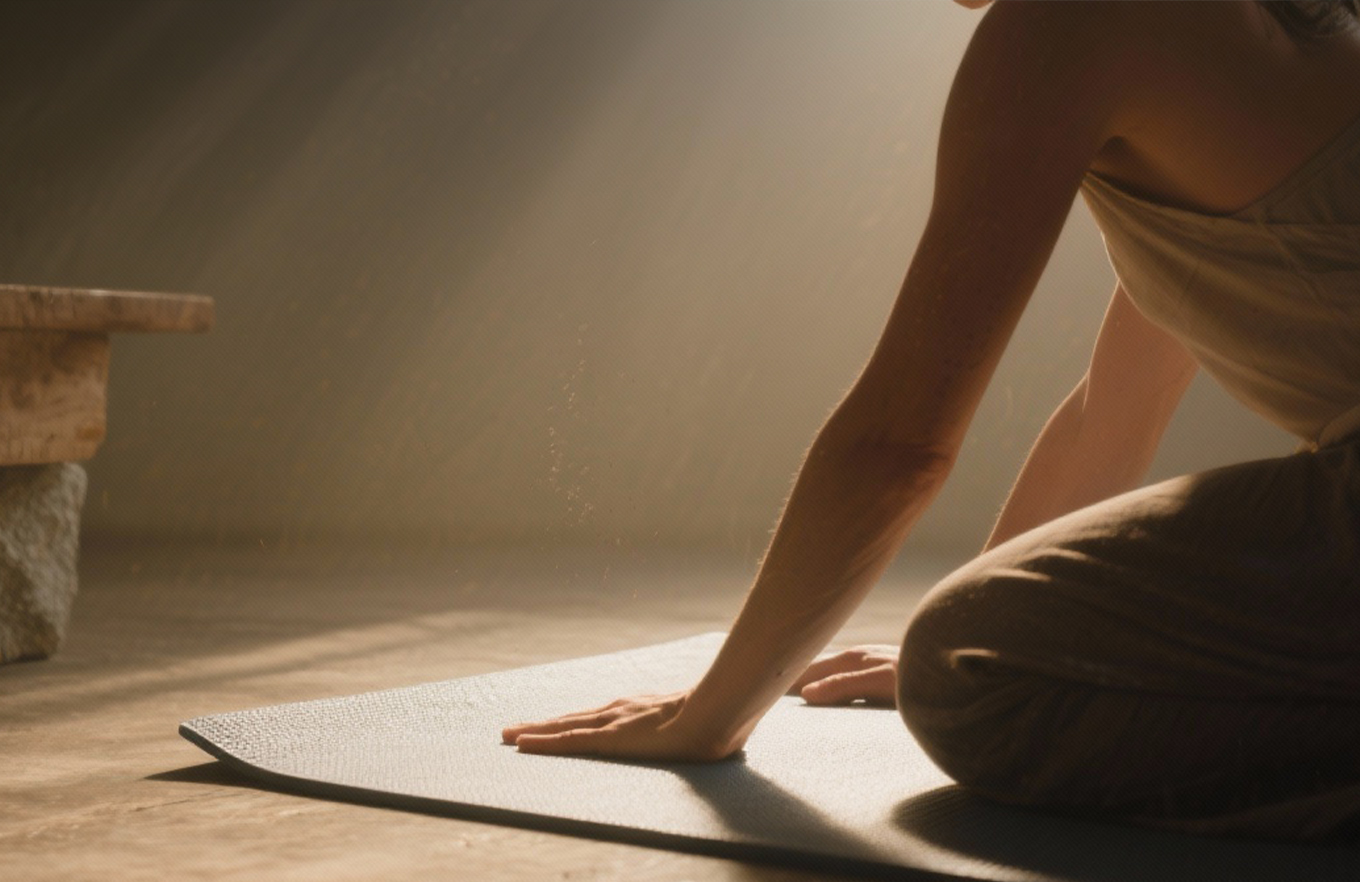November 10, 2025
Creating the perfect yoga mat isn’t just about soft cushioning or aesthetic design; it’s about engineering harmony between comfort, durability, and functionality. Every yoga mat manufacturer today strives to craft mats that can support diverse yoga practices, from gentle stretches to advanced poses.
As we go deep into this conversation about comfort and support, EVA foam enters as the real game-changer. This versatile material not only provides the ideal balance of firmness and flexibility but also ensures long-lasting performance. Companies like Samad Group are setting benchmarks by merging innovation with high-quality materials to create mats that truly redefine user experience.
To understand why EVA foam is the preferred choice for yoga mat manufacturing, it’s essential to look at what makes it so unique. Ethylene-vinyl acetate (EVA) foam is known for its exceptional shock absorption, lightweight nature, and elasticity. When used in yoga mats, it offers a soft yet supportive surface that prevents strain on joints while maintaining grip.
As a leading yoga mat manufacturer, Samad Group utilizes EVA foam not just for its texture but for its long-term resilience. Unlike PVC-based mats that wear out quickly, EVA foam mats retain their shape and cushioning even after extended use. This makes them ideal for fitness enthusiasts and professionals who value quality and longevity.
The journey of an EVA foam yoga mat begins with precision in material selection. The polymer blend must be carefully formulated to achieve the right density, flexibility, and non-slip characteristics. Samad Group takes this step seriously, focusing on eco-conscious sourcing and high-standard production methods to ensure the foam meets both comfort and sustainability goals.
The manufacturing process involves heat molding and cross-linking, which give EVA foam its signature closed-cell structure. This design makes the mat water-resistant, hygienic, and easy to clean, key factors that modern yoga practitioners look for.
Every yoga mat manufacturer understands that texture plays a huge role in user experience. The top surface of EVA foam mats is engineered to provide superior grip, ensuring that yogis can hold positions without slipping. Micro-textured finishes help maintain stability even during high-intensity workouts, while the foam’s inherent elasticity ensures smooth transitions between poses.
Before any yoga mat reaches the market, it undergoes extensive testing to ensure it meets international quality standards. EVA foam mats by Samad Group are tested for tensile strength, tear resistance, and cushioning recovery. This ensures that each mat performs consistently under varying temperatures and humidity levels, a crucial feature for yoga studios and home users alike.

EVA foam has revolutionized how yoga mats are designed and used. Unlike natural rubber or PVC, it offers the perfect blend of softness and structure. Its non-toxic, hypoallergenic properties make it safe for prolonged contact with the skin, while its lightweight build enhances portability.
For yoga studios, EVA foam mats provide a hygienic and long-lasting solution. They’re resistant to moisture, meaning they don’t absorb sweat or odors, making maintenance effortless. As more users prioritize eco-friendly fitness gear, Samad Group has aligned its production to reduce waste and use recyclable EVA materials, paving the way for sustainable fitness accessories.
In an era where sustainability defines brand identity, leading manufacturers are rethinking their processes. Samad Group incorporates energy-efficient production methods and recyclable materials to reduce its carbon footprint. The company’s approach to producing EVA foam mats supports a circular economy model, where every stage, from design to disposal, minimizes environmental impact.
Traditional yoga mats often contain harmful plastics that release toxins over time. EVA foam, on the other hand, is non-toxic and environmentally safer. By choosing EVA-based mats from a responsible yoga mat manufacturer, users not only invest in personal wellness but also contribute to a greener planet.
The success of a yoga mat depends on how well it complements the user’s movement. EVA foam offers adaptive cushioning that adjusts to body weight, supporting pressure points without being overly soft. The foam also provides consistent feedback during poses, allowing for better balance and alignment.
Samad Group’s research-driven design philosophy ensures every mat is built for comfort, whether for slow-paced meditation or high-energy yoga flow. The company’s dedication to performance testing ensures every product delivers the stability, texture, and durability users expect.
Today’s yoga mat manufacturing industry thrives on precision and innovation. Computer-aided design (CAD) tools help manufacturers like Samad Group create mats that meet ergonomic and aesthetic requirements. EVA foam is processed through automated systems that control density and thickness, ensuring every mat is consistent in quality.
Modern lamination techniques also allow for vibrant designs without compromising durability. These advancements help a yoga mat manufacturer create stylish, functional, and long-lasting products that resonate with global fitness markets.

The right mat can completely transform one’s yoga experience. EVA foam mats provide a cushioned foundation that supports focus and balance, making sessions more comfortable and rewarding. Users report fewer joint aches and better postural control compared to harder or thinner mats.
By choosing a mat from a trusted yoga mat manufacturer like Samad Group, practitioners can count on consistent comfort, safety, and longevity, all key factors in maintaining a regular yoga routine.
Experience the comfort and quality that redefine yoga practice. Contact Samad Group today to explore our innovative EVA foam yoga mats designed for every level.
Designing the ideal yoga mat is both a science and an art. From selecting the right EVA foam to mastering sustainable production, the journey involves thoughtful innovation and attention to detail. As fitness and mindfulness grow globally, manufacturers like Samad Group continue to set higher standards in quality, safety, and eco-responsibility. With EVA foam leading the way, the future of yoga mats promises even greater comfort, performance, and sustainability.
EVA foam provides excellent cushioning, durability, and grip, making it ideal for yoga mats. It’s lightweight, non-toxic, and maintains its shape after prolonged use.
Yes, EVA foam is non-toxic and recyclable. Many brands, including Samad Group, use eco-conscious processes to minimize environmental impact.
With proper care, EVA foam yoga mats can last several years. Their dense structure resists wear and retains comfort longer than typical PVC mats.